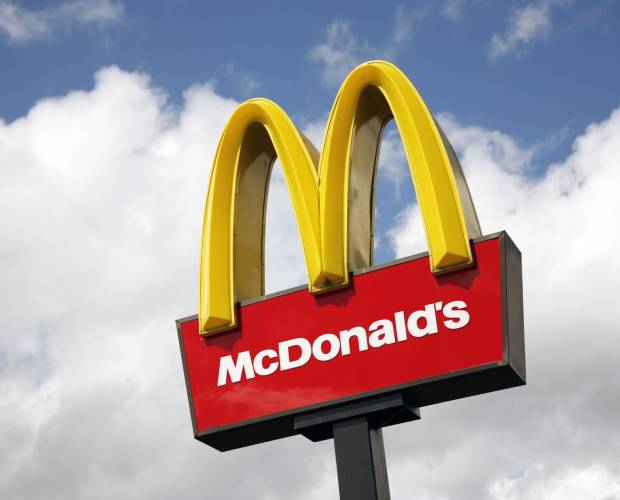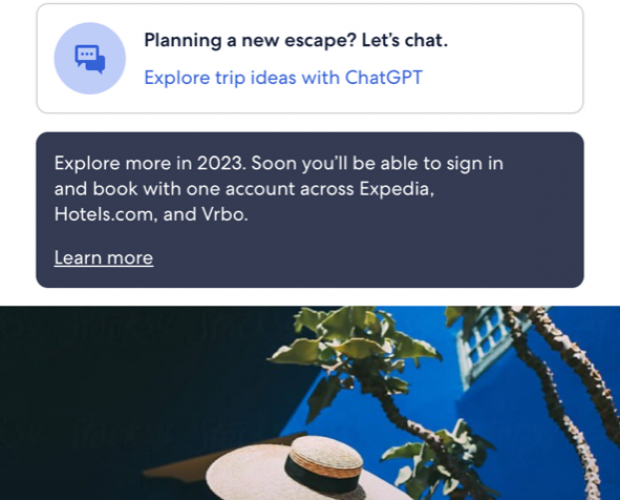Effective Digital Marketing Awards – The Winners (Part 3)
- Monday, July 16th, 2018
- Share this article:
We continue our round-up of the Effective Digital Marketing Awards winners with a look at the winning campaigns in Most Effective Automotive Campaign; Most Effective Financial Services Campaign; and Most Effective Retail & FMCG Campaign categories.
 Most Effective Automotive Campaign
Most Effective Automotive Campaign
Mazda UK and Mindshare UK – Thinking Local at Every Level
The challenger here for Mazda and Mindshare key objective was to transform an uncoordinated Mazda dealer presence, in which different Mazda dealers were bidding against each other for the same keywords, driving prices up, into a cohesive, managed programme. This involved working together closely to ensure the full engagement of the dealer network of 130 dealers, and more than 200 stakeholders in total, all with different needs.
Before the project launched, meetings were held with the dealers to get their buy-in and to explain the benefits of the project. Next, agreements were put in place whereby dealers were told not to bid on certain terms. This was policed using a combination of auction insights and Adthena to provide dealers with evidence when they bid on terms which they were not supposed to be bidding on. After a couple of months, more and more dealers abided by the agreements, and at the time of entry, only out of 130 dealers was bidding on these terms.
The success of the project was measured against two KPIs. Firstly, a reduction in cost; and secondly, an increase in traffic to site and leads for each dealership, whilst keeping below the target CPA. Audiences were identified based on their intent (searches) and proximity from a dealer location using either located queries or radius targeting.
All franchisee accounts were centralised into one unified programme. Keyword sets for each dealer included both non-local dealer terms (e.g. Mazda dealership) overlaid with radius targeting and localised dealer terms (e.g. Mazda dealership Croydon). Templation gave the agility at scale needed when working with 130 dealers, allowing quick expansion of keywords, and on-boarding of new dealers.
As each dealer benefits from its own Mazda-built website, Mazda and Mindshare were able to implement an advanced multi-domain bidding strategy to control the local search results. Using multiple layered radius targets around individual dealerships, with decreasing bid adjustments the further you are from the dealership, a SERP (Search Engine Results Page) was created where local dealers are presented in order of distance from the individual’s location. This resulted in improved user experience with highly relevant coordinated paid search results based on the user’s location.
Finally, the campaign optimised towards offline leads. By passing onsite call data and store visits data into their bid management platform, Mazda and Mindshare able to optimise towards high intent conversions instead of the more traditional softer leads (e.g. brochure downloads).
The results have been excellent, with a 105 per cent year-on-year increase in traffic to dealer sites; a 420 per cent increase in web leads; and a 250 per cent increase in phone leads. Dealers’ CPA decreased 42 per cent year-on-year, while CTR increased from 1.1 per cent to 11.1 per cent. Mazda and Mindshare saw 27,891 store visits across the dealer network in seven and a half months, for traffic going to the dealer sites alone, with an additional 42,147 store visits for traffic going to the regional pages on Mazda.co.uk. In total, the project drove 70,038 prospects to the Mazda dealerships over seven and a half months. The coordination of the dealer activity also saved more than £250,000 in efficiencies on Mazda core brand terms in through reduction of the competition from the dealers. Saved funds were reinvested on generic terms to increase share of voice.
Most Effective Financial Services Campaign
Telegraph Media Group and Responsible Life – Equity Release
Between May and December 2017, Telegraph Equity Release and Responsible Life executed an integrated ‘How much equity could you release?’ content-led campaign across owned channels, paid native advertising and its flagship print newspaper. The purpose was to raise awareness of lifetime mortgages as a financial solution for one of its core audience segments: asset-rich, cash-poor homeowners aged over 55. Telegraph Financial Solutions is part of The Telegraph’s attempts to diversify its revenue streams. It includes a suite of 18 different financial products that are powered by carefully selected and trusted partners in order to provide readers with relevant solutions.
The equity release market was tipped to grow 20 per cent year-on-year, from £2.1bn in 2016 to £2.7bn in 2017, as older borrowers with maturing interest-only loans were fuelling record growth. Against this backdrop, the aim of the campaign was to increase the current Telegraph Equity Release market share from 1 per cent to 5 per cent; to exceed year-on-year Telegraph Equity Release revenue targets by 45 per cent; to implement a content-led approach across online and offline channels (owned, paid and earned) with consistent messaging ; to educate readers about new consumer safety measures to change negative perceptions of equity release schemes; and to raise brand awareness of Telegraph Financial Solutions as a whole.
Evergreen and reactive articles around the equity release topic were carefully produced which The Telegraph believed met search intent (longtail keywords) and/or would engage its readership looking for answers to their queries from a reputable source. The content included informational, product explainers; tools such as an equity release calculator; real-life trigger events to illustrate a need for the product, such as downsizing home or buying a second-property; independent editorial opinion pieces around the pros and cons of equity release; and topical content around equity release interest rates and consumer trends.
This content became a rich entry point for natural search visitors. Answer boxes were landed in the SERP and keyword rankings climbed to the first page of Google. This included the competitive head term ‘equity release’ from the first page at #36 to #5 at best. This alone drove 10,696 organic leads.
From here, popular content and the product page was promoted across onsite owned display and native advertising inventory. Content was also amplified on email to The Telegraph’s newsletter subscribers, and across its organic Facebook ‘Telegraph Money’ profile. To further extend reach, tailored, content-based listicle landing pages were promoted on paid offsite native advertising platforms including Outbrain, Yahoo! and Taboola. This activity generated 42,853 leads.
As a result of all this activity, Telegraph Equity Release’s market share grew by 5 per cent, from 1 per cent to 6 per cent. A total of 58,353 leads were generated, representing 386 per cent growth year-on-year compared to 2016. And revenues increased by 366 per cent year-on-year, against a target growth of 44 per cent. Total online traffic to the Equity Release product page increased by 18,490 per cent year-on-year.
Most Effective Retail & FMCG Campaign
Harvey Nichols and NMPi – Google Shopping Campaign
Harvey Nichols was looking to expand its online shopping internationally, working with NMPi to deliver guaranteed paid search and Google Shopping results. The key challenge, however, was that the retailer’s third-party currency conversion system prevented it from running Google Shopping activity outside of the UK. To get round the problem, MNPI’s analysts developed a process which would automatically convert Harvey Nichols’ UK feed into different currencies based on real-time foreign exchange rates, uploading them into Google Shopping multiple times per day.
In many ways, the campaign went against Google Shopping’s defined best practice, which tells advertisers to only have one Shopping campaign per country. By contrast, Harvey Nichols and NMPi had three, broken down into non-converting, mid-converting, and top-converting search terms.
Google also says that Google Shopping advertisers should not have one product per ad group, which was the case here. According to Google, having multiple campaigns with the same products or one product per ad group will limit the advertiser’s impression share. This is true, but with NMPI’s automation and campaign structure, instead of being limited, its relevant. It does not show products that the consumer would not want to buy and does not show for search terms that don’t convert.
By using the API from Harvey Nichols’ e-commerce platform and combining it with its UK product feed, NMPi was able to produce a new feed for each currency, which would update in real-time in accordance with pricing fluctuations. However, this didn’t resolve the issue of how to keep up with constant changes that would need to be manually uploaded to Google. In order to combat this, it created a system that would automatically upload the product feeds throughout the day. This ensured that website pricing matched the feed within Google Shopping.
NMPi also used sophisticated algorithms to automate everything from campaign structure adjustments, to bid optimisations and negative keyword suggestions, whilst driving great results. Every day, the Shopping algorithm analyses data from the past one, seven and 30 days. Using that data, it then highlights the best performing search terms. Those that perform well are automatically put into a higher priority campaign, and vice-versa. The algorithm then analyses the performance of each product individually, and alters the bids accordingly. The better the performance, the higher the bid for the product.
Whilst this is occurring, another algorithm is scanning for any new products within Harvey Nichols feed and assigning them to a new unique ad group. These are automatically given a higher bid to allow the system to test performance effectively. Once there is enough traffic to assess the product’s performance, the bids are automatically altered.
The results of the were confidential, but sufficient to make this campaign a clear winner in its category.
















